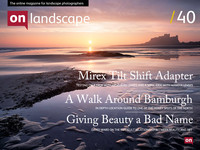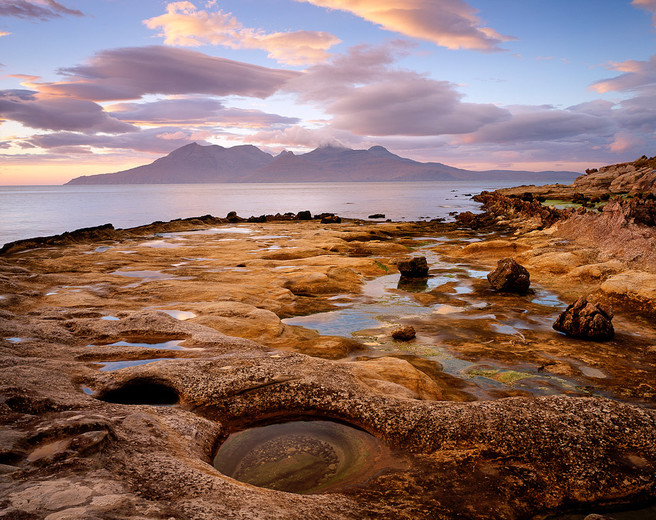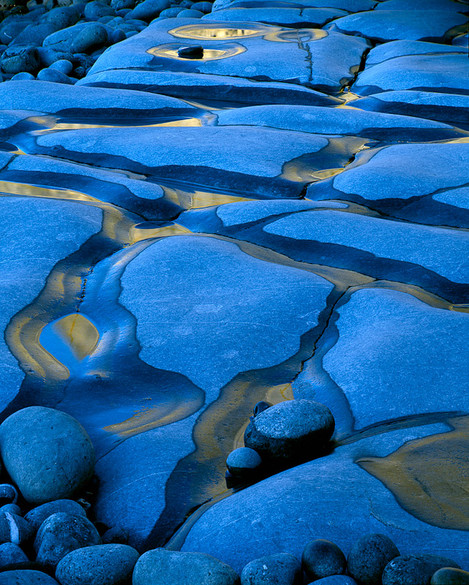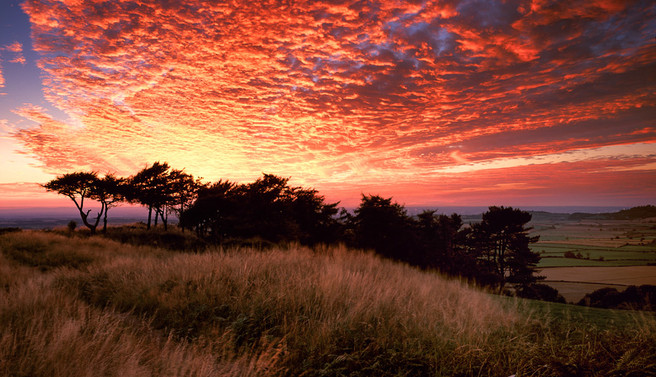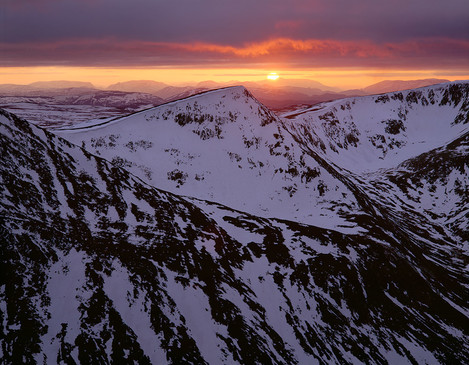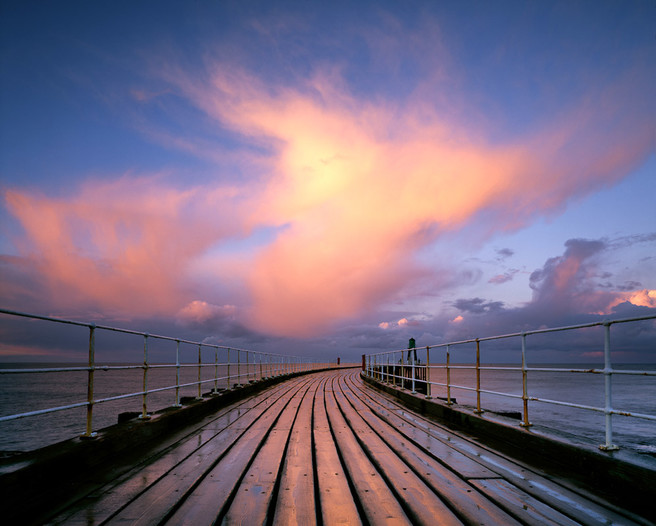Do you manipulate your images? - a response
Very recently I gave a talk on behalf of the Beacon Camera Club at the Swan Theatre in Worcester. In the q&a session at the end, I was asked the (apparently innocent) question, “Do you manipulate your images?” In fact I had already covered this territory with some deliberation earlier in the evening, and the question reminded me, a. that we (ie people) often only listen to what we want to hear, and, b. that there remains a deeply-held suspicion and anxiety about photography’s relationship with ‘the Truth’.
Before plunging into such murky waters, allow me to pre-empt my musings with a brief cameo that was to influence my views heavily on this issue early in life. Post-university my first job was assisting photographer Mike Mitchell in Washington DC. This was 1980/1/2, predating the Apple Macintosh, Photoshop and everything else computerised and digital.
Mike’s fertile imagination and considerable craft skills in lighting and photographic problem-solving kept him busy via an array of advertising and corporate clients who paid handsomely for his ‘vision’. One particular assignment was a conceptually-based corporate annual report for a high tech company working in strategic defence systems.
We worked with a model maker and photographed objects on a variety of backgrounds and settings in the studio, using a wide range of multiple exposure and flash techniques. Every image was shot on 5x4 inch transparency, executed and completed on one individual sheet of film; there was no budget for ‘comping’ or retouching. Each day was long. We would pitch up in the studio at 9am each morning, I would load another 25 film holders in the darkroom, make coffee and we would get to work. Typically we finished around 11pm each night, sometimes later. This was a normal working pattern for Mike, whose social life went into oblivion during assignment weeks. Each image typically took a over a day to finish and we would sometimes work on an image with multi-stage set-ups. Mike used Polaroid as an exposure and positioning check; we could work our way through as many as 35 a day of these. (How much easier it would have been digitally!)
The shoot was a success for the client and the annual report went on to win a national design award, in no small part due to Mike’s exceptional photography. But when I looked at the work it failed to move or excite me. Considering I (like Mike) had been devoted to crafting these pictures during that assignment I was surprised by my lack of enthusiasm, especially as I always appreciated Mike’s unique style of image-making.
These studio images may or may not have been the Truth, but, pre-dating Photoshop they certainly didn’t (to my mind) have much relationship with “Reality”. I concluded that images constructed in the studio, images that could easily have been made by an airbrush illustrator, just weren’t ‘photographic’. Photography’s power and relevance (I now came to feel), was to document the world, including all its rawness and imperfection. Mike and I parted company shortly thereafter, and perhaps that was not surprising as I realised it would be increasingly difficult to commit my heart and soul to such assignments.
So this crystallised view of what photography now meant to me preceded the digital revolution. It was not that I had given deep thought to the notion of “truth versus manipulation”, but I had put myself firmly in the camp of what might be termed the eyewitness, or documentary tradition.
Broadly-speaking for the last thirty years I have been loyal in my own work to that philosophy, if philosophy it is.
So when the “M” word appears in photographic conversation I admit to adopting an immediate defensive posture! Manipulation is not per se an insult or intentional slight. But without doubt in the photographic context it carries a strong implication of distortion, wilful deception and “cheating”. When the question was asked at the Swan theatre I am sure it was directed towards the colours in my images, but of course we are all familiar with more controversial forms of manipulation. In conversation with other photographers afterwards, including my host in Worcester, Ian Thompson, we discussed what ‘manipulations’ we used in our images, and indeed, what constitutes manipulation. Ian is well-qualified to comment on this topic as anyone who read his issue thirty article will appreciate…
(In many respects, the extraordinary level of correspondence that followed Ian’s article illustrates just how raw (if you’ll pardon the pun) a subject this is. And how important.)
In that late-night discussion there was considerable difference of opinion about matters such as merging exposures, cloning out pylons and white vans, and whether black and white was a ‘manipulation’, But all agreed that editing was something we all did, Photoshop was the default tool, and that image editing is an essential craft in contemporary photography, especially for the photographer making prints
The conversation set me wondering, do I still feel now how I did thirty years ago? In order to answer that, I should first remember just how little I knew thirty years ago. I still had only the most threadbare knowledge of photographic history (although my art history was OK). And I had yet to tackle the question of whether black and white, still the dominant photographic medium in journalism at the time, could be described as authentically ‘documentary’. But I repeat, the power of photography was embodied for me in the depiction of ‘things as they are’, and a belief that the image was a convincing description of the original scene.
I now realise that my naivety was a form of strength. That belief gave me a certain momentum, and limits within which I could work. That is not to say that I never did studio work thereafter, or that I never did any form of in-camera manipulation, but I had a creed, something to hold to in my photography.
Thus, when I adopted 5x4 inch full time for my landscape work, I had spent the previous fifteen years working hard to ‘get it right in camera’. Technically, this was a huge advantage, especially shooting on tranny film. For a spell I aspired to a form of photographic mountaineering where by improving my technique and vision, I might graduate to 10x8 one day, thereby attaining a sort of summit and final destination.
But photography does not work that way, and the world is a great deal more complicated than I had hoped. My first Mac actually arrived before my first Ebony, and scanning and Photoshop followed not long thereafter. I think it was 1995 when I had attended a pre-Focus seminar in which photographer Mark Cleghorn declared to the assembled photographers,‘from today, film is dead!’ It was an interesting statement given the cameras available at the time (not great). He was nailing his colours to the digital mast and will probably feel vindicated. But while digital may have taken over the world since, films are even better now than they were then, and are readily available (and so is Winsor and Newton oil paint for that matter; easel painting’s demise at the hands of photography was predicted in the 1850s.)
Mark Cleghorn’s assertion partly fuelled my decision to shoot large format film. At the time I reasoned that if the world was going digital it would be different, and distinctive, to go the opposite way. While I have now embraced digital for my professional work, adopting large format film back then was undoubtedly the best decision I ever made.
To return to the central theme, digital capture and post-production is far from being the origin of ‘manipulation’ in photography anyway. Sophisticated darkroom manipulations were practised by pioneering photographers such as Oscar Rejlander and Henry Peach Robinson in the 1850s; incredible darkroom work can be seen from contemporary photographers such as the brilliant Jerry Uelsman and the late Bob Carlos Clark in the modern era. Rejlander’s work certainly attracted controversy, but surrealist images, such is Uelsman’s do not because, while still recognisably photographic in origin, they never appear to depict reality. The darkroom gives huge scope for manipulation, but in colour especially digital undoubtedly does make it very much cheaper, easier, and (potentially) ‘better’.
When I started out, colour photography was still a great deal more difficult to manipulate than black and white. Even Ansel Adams was a ‘failure’ (his own word) as a colour photographer mainly because he could exercise very little control over colour. American friends who knew Ansel assure me that he would have loved Photoshop and embraced digital capture too. It is funny to reflect on this considering Adams was a founder member of the f.64 group, whose founding principle was to ‘straight photography’. All the photographers in this group shot black and white, and when it came to darkroom manipulation, few were more manipulative than Ansel Adams. And to be pedantic, how can black and white photography be ‘straight’ when colour is such an essential component of human vision? Of course I am not criticising black and white photography, which I still regularly practice, I am merely illustrating the difficulty of defining the term: manipulation.
Since this is a never-ending topic which will never be resolved in any debate I’d like to end with a few thoughts. I have one example of a film image made back in 1996 of which I am particularly fond. With its strong blue colour cast and strong tonal contrasts it made a rather artificial looking cibachrome. A couple or years back I scanned it and spent several sessions tweaking the colour and the shadows, and manipulating the tonal balance in Photoshop. The only thing on my mind was to make it more ‘real’. I believe I was successful in this endeavour, but ‘reality’ (a better match of what I believe I saw) was achieved by manipulating the image and by altering the natural palette of the film. Was that ‘manipulation’?
I have also made any number of stitched images in the last few years, experimenting with panoramic aspect ratios, asymmetric edges and unorthodox perspectives. I suppose it is manipulation all right, but is it cheating, intentionally deceitful, or even ‘altering reality’? All I am looking to do is extend myself creatively and to explore new ways of using photography. But I remain committed to a ‘believable’ rendering of nature in these pictures… even though some of them are black and white!
None of us is comfortable with being duped, and photography’s tradition of veracity makes us inclined to ‘believe’ it. Perhaps the fact that exaggerated colour editing is now so widespread means that the public has become cynical, and cynicism lay behind the question put to me in Worcester. Whereas the reality of colour in the landscape, as readers of onlandscape know only too well, is sometimes more saturated and exotic than many could actually imagine. But if you are indoors websurfing or TV watching when this colour can be seen perhaps you have no experience to know otherwise.
When he exhibited at the Royal Academy later in life painter JMWTurner was roundly ‘booed’ by a lot of critics for what they characterised as his wilful distortions of nature. Whereas we can see the colours Turner painted are an accurate depiction of a sunrise, sunset, storm or whatever. Which all goes to show that human beings remain reluctant to let the facts get in the way of a good argument!

